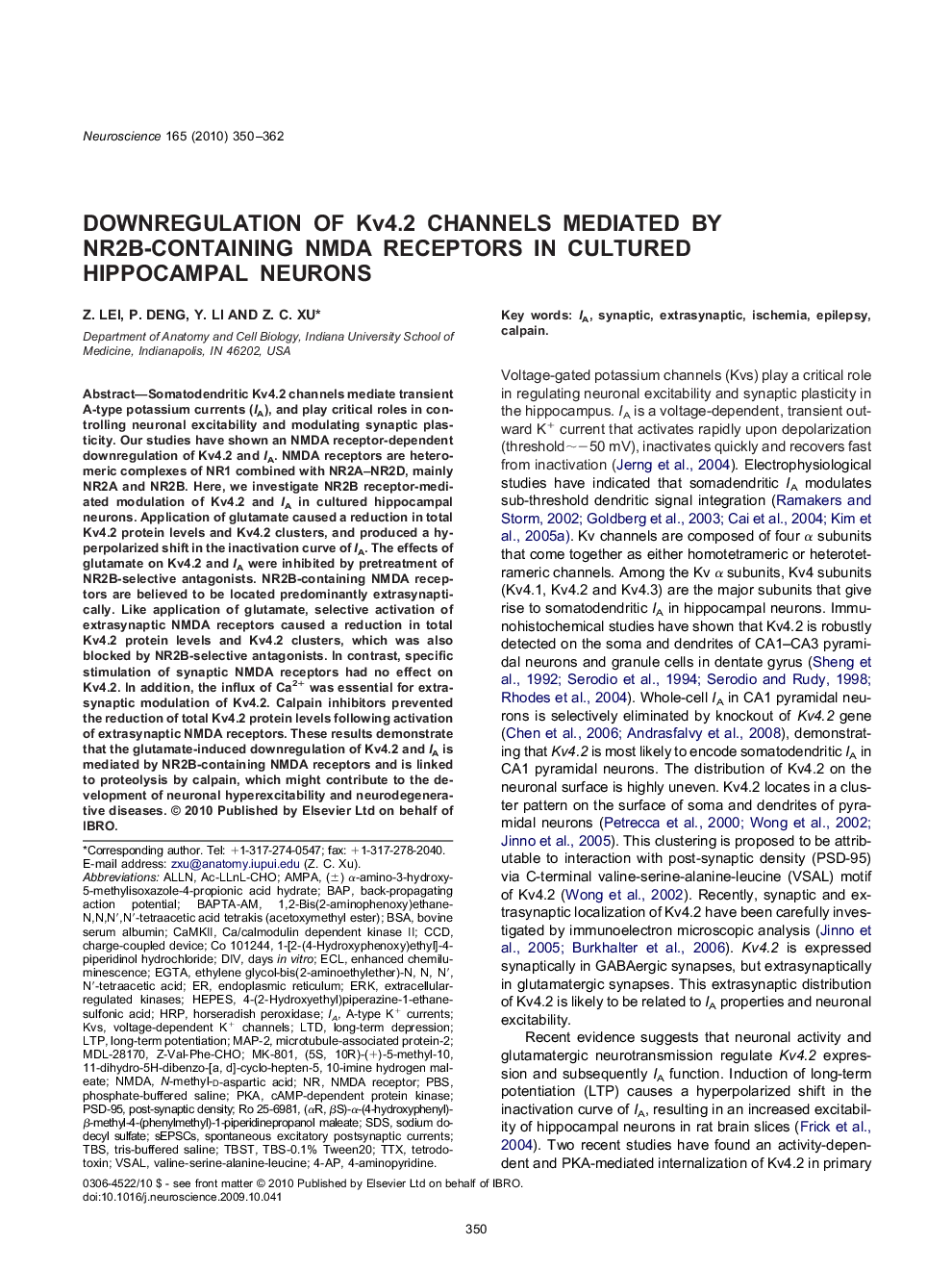| Article ID | Journal | Published Year | Pages | File Type |
|---|---|---|---|---|
| 4339690 | Neuroscience | 2010 | 13 Pages |
Somatodendritic Kv4.2 channels mediate transient A-type potassium currents (IA), and play critical roles in controlling neuronal excitability and modulating synaptic plasticity. Our studies have shown an NMDA receptor-dependent downregulation of Kv4.2 and IA. NMDA receptors are heteromeric complexes of NR1 combined with NR2A–NR2D, mainly NR2A and NR2B. Here, we investigate NR2B receptor-mediated modulation of Kv4.2 and IA in cultured hippocampal neurons. Application of glutamate caused a reduction in total Kv4.2 protein levels and Kv4.2 clusters, and produced a hyperpolarized shift in the inactivation curve of IA. The effects of glutamate on Kv4.2 and IA were inhibited by pretreatment of NR2B-selective antagonists. NR2B-containing NMDA receptors are believed to be located predominantly extrasynaptically. Like application of glutamate, selective activation of extrasynaptic NMDA receptors caused a reduction in total Kv4.2 protein levels and Kv4.2 clusters, which was also blocked by NR2B-selective antagonists. In contrast, specific stimulation of synaptic NMDA receptors had no effect on Kv4.2. In addition, the influx of Ca2+ was essential for extrasynaptic modulation of Kv4.2. Calpain inhibitors prevented the reduction of total Kv4.2 protein levels following activation of extrasynaptic NMDA receptors. These results demonstrate that the glutamate-induced downregulation of Kv4.2 and IA is mediated by NR2B-containing NMDA receptors and is linked to proteolysis by calpain, which might contribute to the development of neuronal hyperexcitability and neurodegenerative diseases.
